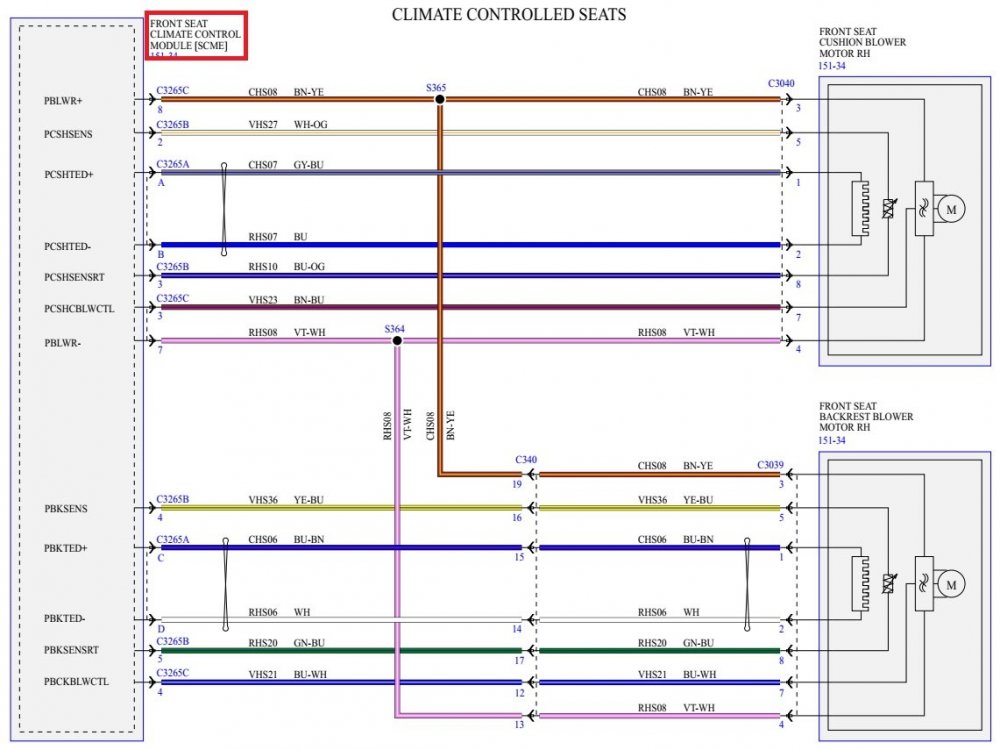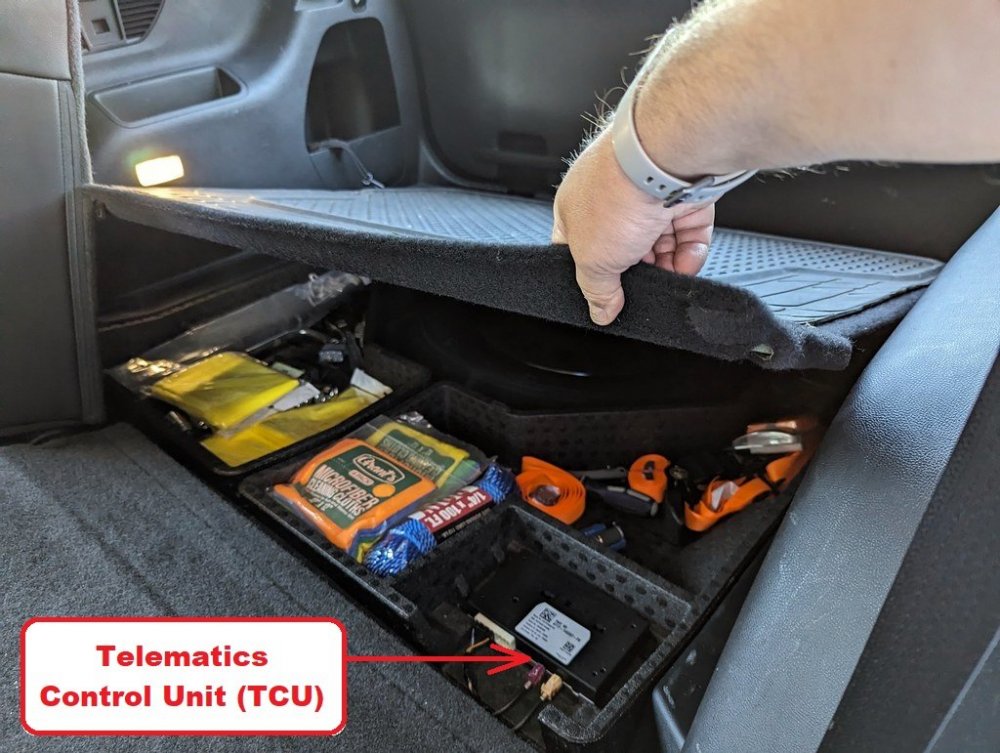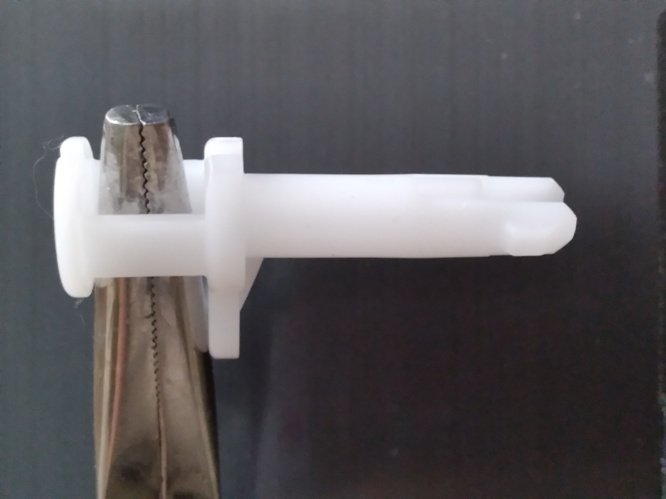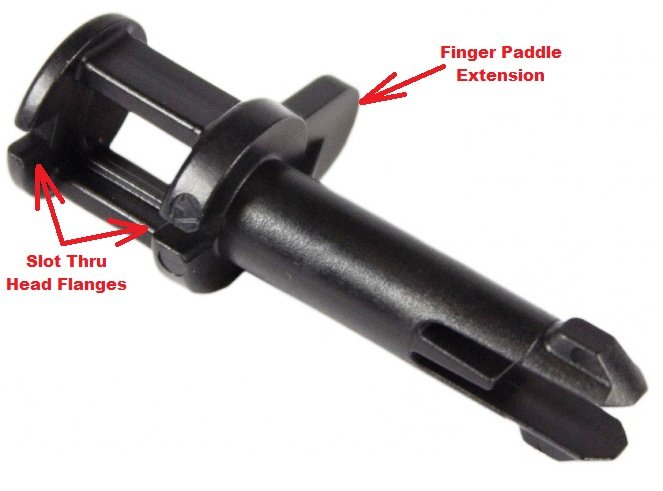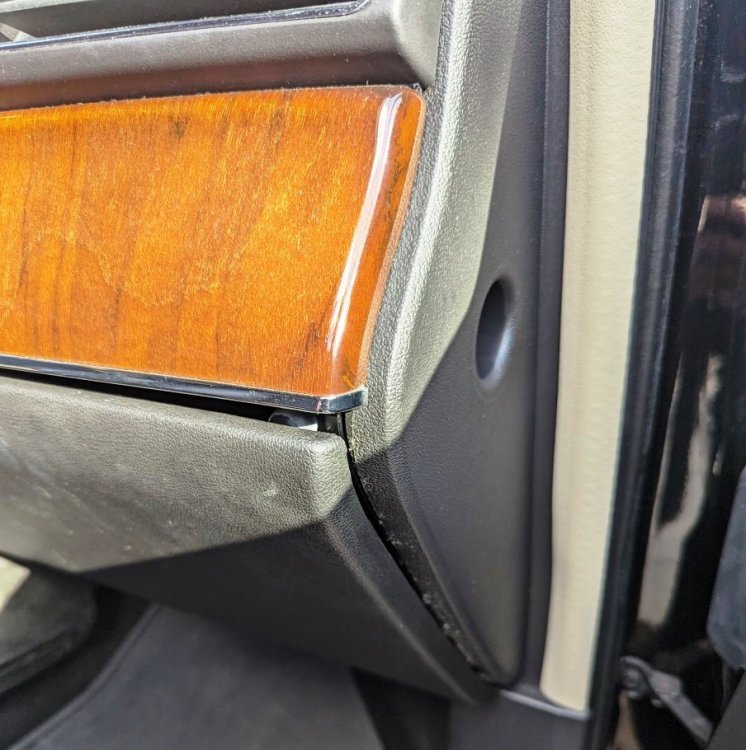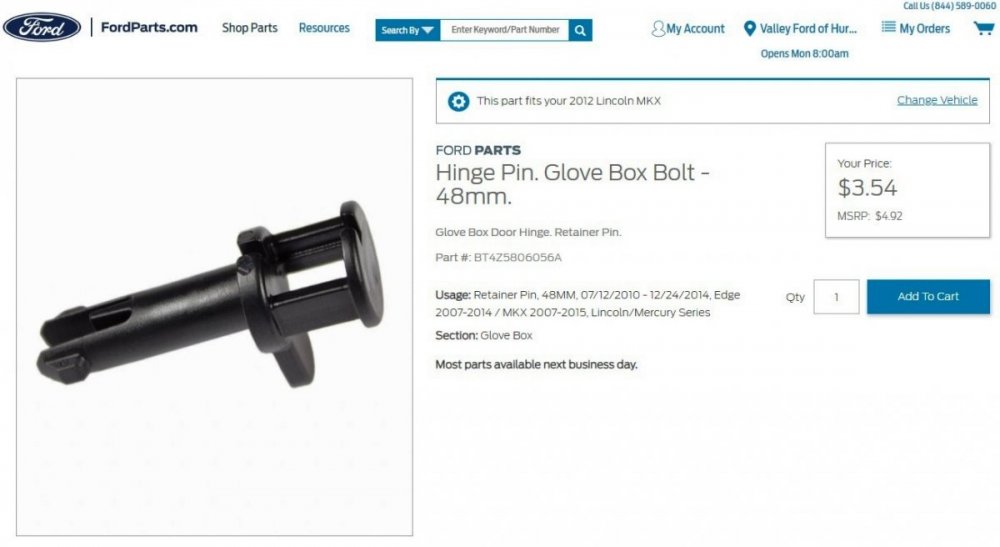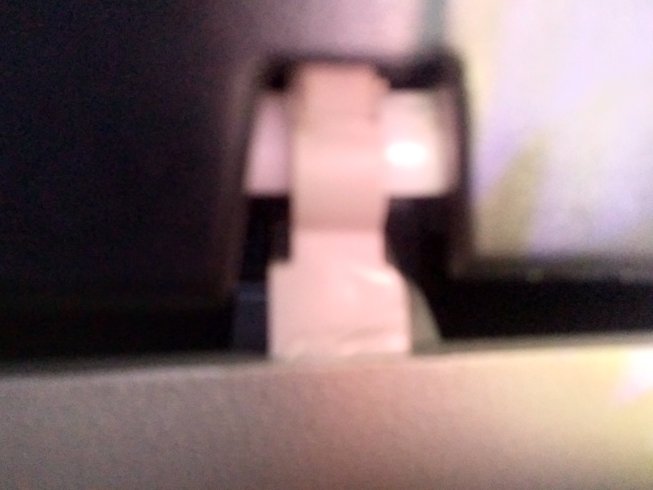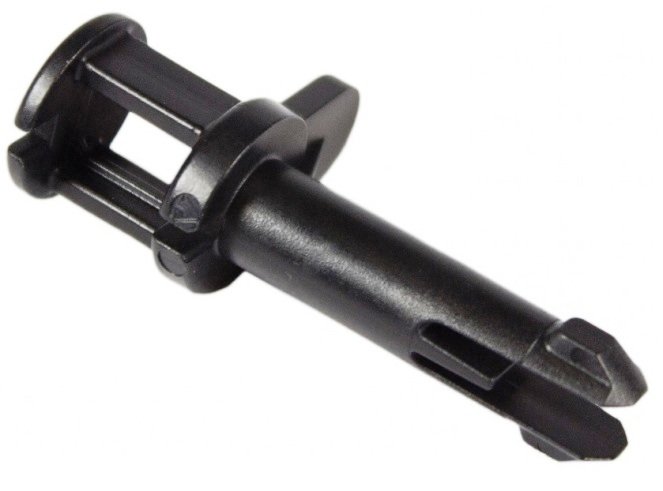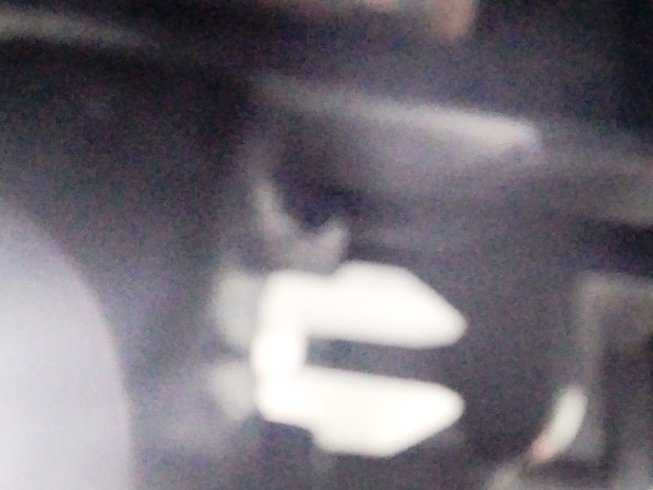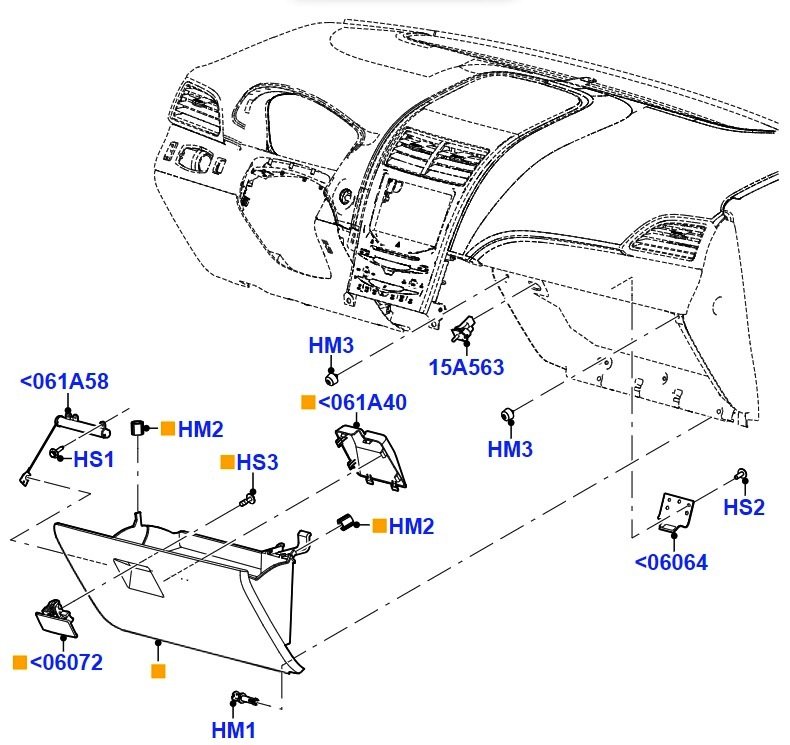

Haz
Edge Member-
Posts
1,460 -
Joined
-
Last visited
-
Days Won
392
Content Type
Profiles
Forums
Gallery
Everything posted by Haz
-

Blend,Mode and Recirculation
Haz replied to 2015Edge2015's topic in Interior, A.C., Heat, Interior Trim
From the 2015 Edge Workshop Manual... Climate Control System - Dual Automatic Temperature Control (DATC) - Component Location Air Handling There are 4 door actuators that control the air flow into the passenger compartment: Air distribution Air inlet Driver side temperature Passenger side temperature All of the door actuators contain a reversible electric motor and a potentiometer. The potentiometer circuit consists of a 5-volt reference signal connected to one end of a variable resistor, and a signal ground connected to the other. A signal circuit is connected to a contact wiper, which is driven along the variable resistor by the actuator shaft. The signal to the FCIM from the contact wiper indicates the position of the actuator door. The FCIM powers the actuator motors to move the doors to the desired positions. The desired door positions are calculated by the FCIM based on the set temperature, in-vehicle temperature, ambient air temperature and sunload. When an airflow mode, desired driver or passenger temperature, fresh air, or recirculation mode is selected, the FCIM moves the actuator motor in the desired direction. The FCIM sends a PWM signal to the blower motor speed control to regulate the blower speed as necessary. The blower motor speed control provides variable ground feed for the blower motor based on the input from the FCIM . A delay function provides a gradual increase or decrease in blower motor speed under all conditions. AUTO When AUTO is selected: the HVAC system operates in a manner to achieve and maintain the temperature set by the operator. the driver and passenger side temperature doors are automatically controlled by the FCIM based on the temperature setting. the A/C compressor is automatically controlled by the PCM from information sent by the FCIM , based on the temperature setting. The A/C compressor operates as long as the outside temperature is above approximately 0°C (32°F). the blower motor speed is automatically controlled through the blower motor speed control that receives a PWM signal from the FCIM based on the temperature setting, but can be manually overridden. the FCIM controls the air inlet door to recirculate, partially recirculate or open to the fresh air position depending on the in-car temperature and humidity sensor inputs. OFF When OFF is selected: the air inlet door closes, preventing outside air and allowing only recirculated air. the blower motor is off. MAX A/C When MAX A/C is selected: the air inlet door closes, preventing outside air and allowing only recirculated air. the recirculated air indicator is illuminated (recirculated air forced on). the footwell vent doors and defrost vent/register doors operate in combination to direct airflow to the instrument panel registers. the temperature doors move to the full cool position. Air temperature can be manually overridden. the A/C button is illuminated. the A/C compressor operates as long as the outside temperature is above approximately 0°C (32°F). the blower motor is commanded to the highest speed. The blower motor speed is adjustable. PANEL When PANEL mode is selected: the recirculated air request button is enabled. If the recirculated air request button is selected (indicator on), the air inlet door closes, preventing outside air from entering the passenger compartment. If the recirculated air request button is not selected (indicator off), the air inlet door opens, allowing only outside air into the passenger compartment. the footwell vent doors and defrost vent/register doors operate in combination to direct airflow to the instrument panel registers. blended air temperature is available. Only when A/C compressor operation has been selected by pressing the A/C button (indicator on) can the airflow temperature be cooled below the outside air temperature. the blower motor is on and the speed is adjustable. PANEL/FLOOR When PANEL/FLOOR mode is selected: the recirculated air request button is enabled. If the recirculated air request button is selected (indicator on), the air inlet door closes, preventing outside air from entering the passenger compartment. If the recirculated air request button is not selected (indicator off), the air inlet door opens, allowing only outside air into the passenger compartment. the air distribution doors operate in combination to direct airflow to the floor duct and the instrument panel registers. A small amount of airflow from the side window demisters and defrost duct is present. blended air temperature is available. Only when A/C compressor operation has been selected by pressing the A/C button (indicator on) can the airflow temperature be cooled below the outside air temperature. the blower motor is on and the speed is adjustable. FLOOR When FLOOR mode is selected: the recirculated air request button is enabled. If the recirculated air request button is selected (indicator on), the air inlet door closes, preventing outside air from entering the passenger compartment. If the recirculated air request button is not selected (indicator off), the air inlet door opens, allowing only outside air into the passenger compartment. the air distribution doors operate in combination to direct airflow to the floor duct. A small amount of airflow from the defroster duct and side window demisters is present. blended air temperature is available. Only when A/C compressor operation has been selected by pressing the A/C button (indicator on) can the airflow temperature be cooled below the outside air temperature. the blower motor is on and the speed is adjustable. FLOOR/DEFROST When FLOOR/DEFROST mode is selected: the recirculated air request button is enabled. If the recirculated air request button is selected (indicator on), the air inlet door closes, preventing outside air from entering the passenger compartment. If the recirculated air request button is not selected (indicator off), the air inlet door opens, allowing only outside air into the passenger compartment. the air distribution doors operate in combination to direct airflow to the floor duct, the defroster duct and the side window demisters. blended air temperature is available. Only when A/C compressor operation has been selected by pressing the A/C button (indicator on) can the airflow temperature be cooled below the outside air temperature. the blower motor is on and the speed is adjustable. MAX DEFROST When MAX DEFROST mode is selected: the recirculated air request button is disabled. The air inlet door opens, allowing only outside air into the passenger compartment. the air distribution doors operate in combination to direct airflow to the defroster duct and side window demisters. A small amount of airflow from the floor duct is present. the A/C is turned on in defrost mode. The A/C compressor operates as long as the outside temperature is above approximately 0°C (32°F). the temperature is set to the highest setting and is not adjustable. the fan is set to the highest speed and is not adjustable. MAX DEFROST can be exited by pressing the AUTO button. Climate Control System - Dual Automatic Temperature Control (DATC) - Front Controls Interface Module (FCIM) to Air Flow Door Actuators - Wiring Diagram Climate Control System - Electronic Manual Temperature Control (EMTC) - Component Location Air Handling There are 3 door actuators that control the air flow into the passenger compartment: Air distribution Air inlet Temperature All of the door actuators contain a reversible electric motor and a potentiometer. The potentiometer circuit consists of a 5-volt reference signal connected to one end of a variable resistor, and a signal ground connected to the other. A signal circuit is connected to a contact wiper, which is driven along the variable resistor by the actuator shaft. The signal to the FCIM from the contact wiper indicates the position of the actuator door. The FCIM powers the actuator motors to move the doors to the desired positions. The desired door positions are calculated by the FCIM based on the set temperature, in-vehicle temperature, ambient air temperature and sunload. When an airflow mode, desired temperature, fresh air, or recirculation mode is selected, the FCIM moves the actuator motor in the desired direction. The FCIM sends a PWM signal to the blower motor speed control to regulate the blower speed as necessary. The blower motor speed control provides variable ground feed for the blower motor based on the input from the FCIM . A delay function provides a gradual increase or decrease in blower motor speed under all conditions. OFF When OFF is selected: the air inlet door closes, preventing outside air and allowing only recirculated air. the blower motor is off. MAX A/C When MAX A/C is selected: the air inlet door closes allowing only recirculated air. the recirculated air indicator is illuminated (recirculated air forced on). the footwell vent doors and defrost vent/register doors operate in combination to direct airflow to the instrument panel registers. the temperature door moves to the full cool position. Air temperature can be manually overridden. the A/C button is illuminated. the A/C compressor operates if the outside temperature is above approximately 0°C (32°F). the blower motor is commanded to the highest speed. The blower motor speed is adjustable. PANEL When PANEL mode is selected: the recirculated air request button is enabled. If the recirculated air request button is selected (indicator on), the air inlet door closes, preventing outside air from entering the passenger compartment. If the recirculated air request button is not selected (indicator off), the air inlet door opens, allowing only outside air into the passenger compartment. the footwell vent doors and defrost vent/register doors operate in combination to direct airflow to the instrument panel registers. blended air temperature is available. The airflow temperature is only cooled below the outside air temperature when the A/C is commanded on. the blower motor is on and the speed is adjustable. PANEL/FLOOR When PANEL/FLOOR mode is selected: the recirculated air request button is enabled. If the recirculated air request button is selected (indicator on), the air inlet door closes, preventing outside air from entering the passenger compartment. If the recirculated air request button is not selected (indicator off), the air inlet door opens, allowing only outside air into the passenger compartment. the air distribution doors operate in combination to direct airflow to the floor duct and the instrument panel registers. A small amount of airflow from the side window demisters and defrost duct is present. blended air temperature is available. The airflow temperature is only cooled below the outside air temperature when the A/C is commanded on. the blower motor is on and the speed is adjustable. FLOOR When FLOOR mode is selected: the recirculated air request button is enabled. If the recirculated air request button is selected (indicator on), the air inlet door closes, preventing outside air from entering the passenger compartment. If the recirculated air request button is not selected (indicator off), the air inlet door opens, allowing only outside air into the passenger compartment. the air distribution doors operate in combination to direct airflow to the floor duct. A small amount of airflow from the defroster duct and side window demisters is present. blended air temperature is available. The airflow temperature is only cooled below the outside air temperature when the A/C is commanded on. the blower motor is on and the speed is adjustable. FLOOR/DEFROST When FLOOR/DEFROST mode is selected: the recirculated air request button is enabled. If the recirculated air request button is selected (indicator on), the air inlet door closes, preventing outside air from entering the passenger compartment. If the recirculated air request button is not selected (indicator off), the air inlet door opens, allowing only outside air into the passenger compartment. the air distribution doors operate in combination to direct airflow to the floor duct, the defroster duct and the side window demisters. blended air temperature is available. The airflow temperature is only cooled below the outside air temperature when the A/C is commanded on. the blower motor is on and the speed is adjustable. MAX DEFROST When MAX DEFROST mode is selected: the recirculated air request button is disabled. The air inlet door opens, allowing only outside air into the passenger compartment. the air distribution doors operate in combination to direct airflow to the defroster duct and side window demisters. A small amount of airflow from the floor duct is present. the A/C is turned on in defrost mode. The A/C compressor operates as long as the outside temperature is above approximately 0°C (32°F). the temperature is set to the highest setting and is not adjustable. the fan is set to the highest speed and is not adjustable. MAX DEFROST can be exited by pressing the AUTO button. Climate Control System - Electronic Manual Temperature Control (EMTC) - Front Controls Interface Module (FCIM) to Air Flow Door Actuators - Wiring Diagram Document download links> Air Distribution Door Actuator - Removal and Installation - 2015 Edge Workshop Manual.pdf Gateway Module A (GWM) - Removal and Installation - 2015 Edge Workshop Manual.pdf Supplemental Restraint System (SRS) Depowering - General Procedures - 2015 Edge Workshop Manual.pdf Driver Knee Airbag - Removal and Installation - 2015 Edge Workshop Manual.pdf Supplemental Restraint System (SRS) Repowering - General Procedures - 2015 Edge Workshop Manual.pdf Air Inlet Door Actuator - Removal and Installation - 2015 Edge Workshop Manual.pdf (Requires extensive disassembly of Instrument Panel and Floor Console not described in this document) Driver Side Temperature Door Actuator - Removal and Installation - 2015 Edge Workshop Manual.pdf Brake Pedal and Bracket - Removal and Installation - 2015 Edge Workshop Manual.pdf Stoplamp Switch - Removal and Installation - 2015 Edge Workshop Manual.pdf Accelerator Pedal - Removal and Installation - 2015 Edge Workshop Manual.pdf Passenger Side Temperature Door Actuator - Removal and Installation - 2015 Edge Workshop Manual.pdf Temperature Door Actuator - Removal and Installation - 2015 Edge Workshop Manual.pdf TEMPERATURE DOOR ACTUATOR RH - Connector C2092 Details - 2015 Edge.pdf FRONT CONTROLS INTERFACE MODULE (FCIM) - Connector C2402A Details - 2015 Edge.pdf FRONT CONTROLS INTERFACE MODULE (FCIM) - Connector C2402B Details - 2015 Edge.pdf Front Controls Interface Module (FCIM) - Removal and Installation - 2015 Edge Workshop Manual.pdf From Climate Control System - Dual Automatic Temperature Control (DATC) - Diagnosis and Testing - 2015 Edge Workshop Manual... FCIM - DATC DTC CHART B1082:13 Right Temperature Damper Motor: Open Circuit This DTC sets when the module senses no voltage on the actuator motor circuit when ground is applied to drive the motor, indicating a open circuit. The motor can not move. The Temperature Control Is Inoperative Or Does Not Operate Correctly - Passenger Side Normal Operation and Fault Conditions - Temperature Door Actuator - Passenger side During an actuator calibration cycle, the module drives the temperature door until the door reaches both internal stops in the HVAC case. If the temperature door is temporarily obstructed or binding during a calibration cycle, the module may interpret this as the actual end of travel for the door. When this condition occurs and the module commands the actuator to its end of travel, the airflow may not be the expected temperature. Possible Sources Wiring, terminals or connectors Passenger side temperature door actuator FCIM PINPOINT TEST J: THE TEMPERATURE CONTROL IS INOPERATIVE OR DOES NOT OPERATE CORRECTLY - PASSENGER SIDE NOTICE: Use the correct probe adapter(s) when making measurements. Failure to use the correct probe adapter(s) may damage the connector. J1 CHECK THE PASSENGER SIDE TEMPERATURE DOOR ACTUATOR CIRCUITS FOR A SHORT TO VOLTAGE Ignition OFF. Disconnect FCIM C2402A. Disconnect FCIM C2402B. Disconnect Passenger side temperature door actuator C2092. Ignition ON. Measure: Positive Lead Measurement / Action Negative Lead C2092 Pin 1 Ground C2092 Pin 2 Ground C2092 Pin 3 Ground C2092 Pin 4 Ground C2092 Pin 6 Ground Is any voltage present? Yes REPAIR the circuit. No GO to J2 J2 CHECK THE PASSENGER SIDE TEMPERATURE DOOR ACTUATOR CIRCUITS FOR A SHORT TO GROUND Ignition OFF. Measure: Positive Lead Measurement / Action Negative Lead C2092 Pin 1 Ground C2092 Pin 2 Ground C2092 Pin 3 Ground C2092 Pin 4 Ground C2092 Pin 6 Ground Are the resistances greater than 10,000 ohms? Yes GO to J3 No REPAIR the circuit. J3 CHECK THE PASSENGER SIDE TEMPERATURE DOOR ACTUATOR CIRCUITS FOR AN OPEN Measure: Positive Lead Measurement / Action Negative Lead C2092 Pin 2 C2402A Pin 2 C2092 Pin 3 C2402A Pin 3 Positive Lead Measurement / Action Negative Lead C2092 Pin 1 C2402B Pin 13 C2092 Pin 4 C2402B Pin 18 C2092 Pin 6 C2402B Pin 14 Are the resistances less than 3 ohms? Yes GO to J4 No REPAIR the circuit. J4 CHECK THE PASSENGER SIDE TEMPERATURE DOOR ACTUATOR CIRCUITS FOR A SHORT TOGETHER Measure: Positive Lead Measurement / Action Negative Lead C2092 Pin 1 C2092 Pin 2 C2092 Pin 1 C2092 Pin 3 C2092 Pin 1 C2092 Pin 4 C2092 Pin 1 C2092 Pin 6 C2092 Pin 2 C2092 Pin 3 C2092 Pin 2 C2092 Pin 4 C2092 Pin 2 C2092 Pin 6 C2092 Pin 3 C2092 Pin 4 C2092 Pin 3 C2092 Pin 6 C2092 Pin 4 C2092 Pin 6 Are the resistances greater than 10,000 ohms? Yes INSTALL a new passenger side temperature door actuator. REFER to: Passenger Side Temperature Door Actuator (412-00 Climate Control System - General Information, Removal and Installation). TEST the system for normal operation. If the concern is still present, GO to J5 No REPAIR the circuit. J5 CHECK FOR CORRECT FCIM (FRONT CONTROLS INTERFACE MODULE) OPERATION Ignition OFF. Disconnect and inspect all FCIM connectors. Repair: corrosion (install new connector or terminals – clean module pins) damaged or bent pins – install new terminals/pins pushed-out pins – install new pins as necessary Connect all FCIM connectors. Make sure they seat and latch correctly. Operate the system and determine if the concern is still present. Is the concern still present? Yes CHECK OASIS for any applicable Technical Service Bulletins (TSBs). If a TSB exists for this concern, DISCONTINUE this test and FOLLOW TSB instructions. If no Technical Service Bulletins (TSBs) address this concern, VIN required to access Guided Routine (FCIM) No The system is operating correctly at this time. The concern may have been caused by a loose or corroded connector. ADDRESS the root cause of any connector or pin issues. Good luck! -

Installation of a seat in EDGE SEL from TITANIUM
Haz replied to Yurez's topic in Accessories & Modifications
To accomplish your goal of installing the seats and making them fully functional: Buy an Edge Wiring Book in your native language. English language wiring diagrams and connector circuit details are obviously not working... From the document collection you received... Climate Controlled Seats - Wiring Diagram 1 - 2018 Edge.pdf, with Labels added Good luck! -

Installation of a seat in EDGE SEL from TITANIUM
Haz replied to Yurez's topic in Accessories & Modifications
Per enigma-2's comment on SRS Airbag System precautions... Document download links> Supplemental Restraint System (SRS) Depowering - General Procedures - 2015 Edge Workshop Manual.pdf Supplemental Restraint System (SRS) Repowering - General Procedures - 2015 Edge Workshop Manual.pdf Good luck! -

Installation of a seat in EDGE SEL from TITANIUM
Haz replied to Yurez's topic in Accessories & Modifications
Always hopeful that visualizations are better than a thousand Google-translated words... Driver Seat Module (DSM) - Beneath Driver Seat Front Seat Climate Control Module (SCME) - Beneath Passenger Seat Documents relating to seat-to-seat "adapter cable", as you describe it... Document download links> Front Driver Seat - Connector C311 Details - 2018 Edge.pdf Front Driver Seat - Connector C311 Seat View Location - 2018 Edge.pdf Front Driver Seat - Connector C311 Harness View Location - 2018 Edge.pdf Front Passenger Seat - Connector C312 Details - 2018 Edge.pdf Front Passenger Seat - Connector C312 Location - 2018 Edge.pdf While Titanium-owning Forum members may offer their own hands-on Climate Controlled Seating insights, I am moving on to research other Forum member questions. Once again, speaking directly with Parts & Service personnel at your local Ford dealer will eliminate your need for Google Translate. Good luck! -

Installation of a seat in EDGE SEL from TITANIUM
Haz replied to Yurez's topic in Accessories & Modifications
Information about the Front Seat Climate Control Module (SCME), shown in your above photo, was contained in the recently shared document collection, including: Climate Controlled Seats - Wiring Diagram 2 - 2018 Edge.pdf - showing SCME in relation to the Left Hand/Driver's seat... Climate Controlled Seats - Wiring Diagram 3 - 2018 Edge.pdf - showing SCME in relation to the Right Hand/Passenger's seat... FRONT SEAT CLIMATE CONTROL MODULE [SCME] -Connectors C3265A-C3265B-C3265C Location - 2018 Edge.pdf - showing all SCME connectors' relative location... The following documents provide Driver's Seat Module (DSM) connector details on SCME circuits affecting Driver's seat climate control components... Document download links> DRIVER SEAT MODULE (DSM) - Connector C341D Details - 2018 Edge.pdf DRIVER SEAT MODULE (DSM) - Connector C341E Details - 2018 Edge.pdf DRIVER SEAT MODULE (DSM) - Connectors C341D & C341E Location - 2018 Edge.pdf Good luck! -
The other mechanical switch risks would be the Start/Stop and Transmission Range (TR) switches, which should trigger DTCs. Additional, for the "Library"... Document download links> TIRE PRESSURE MONITOR (TPM) MODULE - Connector C4321 Details - 2011 Edge.pdf TIRE PRESSURE MONITOR (TPM) MODULE - Connector C4321 Location - 2011 Edge.pdf Good luck!
-
The immobilization effect of the Passive Anti-Theft System (PATS) occurs from the interaction of the Intelligent Access (IA) key fob and the Start push button with several electronic modules via related components and circuits in the vehicle. From the 2011 Edge Workshop Manual... (Placing your device cursor over underlined acronyms should result in a popup of the component's full name) Passive Anti-Theft System (PATS) With Intelligent Access (IA) The Passive Anti-Theft System (PATS) consists of the following components: Intelligent Access (IA) key Front passive start antenna (located on the bottom of the front of the floor console) Center passive start antenna (located in the rear of the floor console) Rear passive start antenna (located under the liftgate scuff trim panel, beneath the liftgate striker) Backup transceiver (located in the floor console, below the audio jacks) Tire Pressure Monitor (TPM) module Remote Function Actuator (RFA) module (located behind the glove compartment) Body Control Module (BCM) PCM Starting System - Principles of Operation With IA NOTE: This vehicle is equipped with Passive Anti-Theft System (PATS) that disables the engine if an unprogrammed PATS key is used or an invalid PCM ID is received. PATS is controlled by the Remote Function Actuator (RFA) module. If there is a PATS concern that cause the engine not to crank, the Instrument Panel Cluster (IPC) displays "STARTING SYSTEM FAULT" in the message center. Refer to Section 419-01B to diagnose a PATS concern. The Intelligent Access (IA) starting system is electronically controlled by the RFA module which acts as the PATS control function. The RFA receives the following inputs: Brake pedal applied input Start/stop switch is pressed Transmission in PARK or NEUTRAL signal from the Transmission Range (TR) sensor Run/start relay voltage. Correctly coded ignition key, from the RFA During a start event, the start/stop switch is pressed in combination with the brake pedal, the RFA module and BCM receives a request to start the engine. The RFA module communicates with the BCM . Once the BCM receives the command from the RFA module, it communicates with the PCM. Once the BCM initializes and communicates with the RFA module and the PCM, it checks the ID of each module and compares it with the module ID stored in its own memory. If the RFA module and PCM IDs match the IDs stored in the BCM , then PATS is enabled. The PCM recognizes the correct inputs and provides voltage and ground to energize the starter relay coil and close the starter relay contacts. The starter relay contacts close, providing voltage to the starter solenoid, allowing the starter motor to crank the engine. The PCM disengages the starter motor once an engine rpm threshold is reached, a set crank time is exceeded or the stop/start button is pressed indicating an engine shutdown. Remote Function Actuator (RFA) Module - Principles of Operation The Remote Function Actuator (RFA) module is only equipped when the vehicle has the Intelligent Access (IA) feature. On vehicles equipped with this option, the RFA controls mostly the IA and related entry/anti-theft systems (such as the power door locks and the liftgate release). The RFA module communicates on the Medium Speed Controller Area Network (MS-CAN) . The RFA module controls the following functions: Intelligent Access (IA) feature Keyless entry keypad illumination Liftgate release Passive Anti-Theft System (PATS) Power door locks Remote Keyless Entry (RKE) system The following collection of documents provide fuller detail on component interaction, wiring diagrams and electrical connector details & connector locations, and diagnosis & testing procedures that may equip you, if you choose to identify the root of the problem yourself, or at least, will enhance your awareness if you decide to turn the job over to your dealer's Service technicians. Document download links> Anti-Theft — With Intelligent Access (IA) - Diagnosis and Testing - 2011 Edge Workshop Manual.pdf Starting System - Diagnosis and Testing - 2011 Edge Workshop Manual.pdf Remote Function Actuator (RFA) Module - Diagnosis and Testing - 2011 Edge Workshop Manual.pdf Handles, Locks, Latches and Entry Systems — With Intelligent Access (IA) - Diagnosis and Testing - 2011 Edge Workshop Manual .pdf Tire Pressure Monitoring System (TPMS) - Diagnosis and Testing - 2011 Edge Workshop Manual.pdf Body Control Module (BCM) - Removal and Installation - 2011 Edge Workshop Manual.pdf Body Control Module (BCM) Fuse Protected-Circuits Legend - HIGHLIGHTED - Wiring Diagram - 2011 Edge Workshop Manual.pdf Remote Function Actuator (RFA) Module - Removal and Installation - 2011 Edge Workshop Manual.pdf Remote Function Actuator (RFA) Module - Enhanced Image - 2011 Edge Workshop Manual.pdf Powertrain Control Module (PCM) - Removal and Installation - 2011 Edge Workshop Manual.pdf Tire Pressure Monitor (TPM) Module - Removal and Installation - 2011 Edge Workshop Manual.pdf Passive Anti-Theft System - Wiring Diagram - Cell 112 , Page 02 - 2011 Edge Workshop Manual.pdf Passive Anti-Theft System - Wiring Diagram - Cell 112 , Page 03 - 2011 Edge Workshop Manual.pdf Power Distribution-BCM - Wiring Diagram - Cell 013, Page 12 - 2011 Edge Workshop Manual.pdf Remote Keyless Entry and Alarm - Wiring Diagram - Cell 117, Page 06 - 2011 Edge Workshop Manual.pdf Remote Keyless Entry and Alarm - Wiring Diagram - Cell 117, Page 07 - 2011 Edge Workshop Manual.pdf Remote Keyless Entry and Alarm - Wiring Diagram - Cell 117, Page 08 - 2011 Edge Workshop Manual.pdf Remote Keyless Entry and Alarm - Wiring Diagram - Cell 117, Page 09 - 2011 Edge Workshop Manual.pdf Remote Keyless Entry and Alarm - Wiring Diagram - Cell 117, Page 10 - 2011 Edge Workshop Manual.pdf Starting System -Wiring Diagram - Cell 020, Page 02 - 2011 Edge Workshop Manual.pdf Tire Pressure Monitor System - Wiring Diagram - Cell 118, Page 01 - 2011 Edge Workshop Manual.pdf Backup Transceiver - Connector C3371 Location (Floor Console) - 2011 Edge Workshop Manual.pdf Remote Function Actuator (RFA) Module - Connector C2153A Details - 2011 Edge Workshop Manual.pdf Remote Function Actuator (RFA) Module - Connector C2153B Details - 2011 Edge Workshop Manual.pdf Remote Function Actuator (RFA) Module - Connector C2153C Details - 2011 Edge Workshop Manual.pdf Remote Function Actuator (RFA) Module - Connector C2153D Details - 2011 Edge Workshop Manual.pdf Remote Function Actuator (RFA) Module - Connector C2153E Details - 2011 Edge Workshop Manual.pdf Remote Function Actuator (RFA) Module - Connectors Location (Behind Glovebox) - 2011 Edge Workshop Manual.pdf While I hope these documents cover all the bases for you, please let me know if you recognize a need for anything else. Presumably, your dealer's conclusion about ignition immobilization was based upon Diagnostic Trouble Codes (DTCs) present in your Edge's module(s). If you are personally going to embark upon chasing down potential cause(s), scan or get your Edge scanned to see what DTCs may be present, since they may be cited in the various Diagnosis and Testing documents linked above, and can indicate which Pinpoint Test to employ. Good luck!
-
Adding these, then, for your future reference... Document download links> Cooling Fans Wiring Diagram - Without Trailer Tow - 2007 Edge.pdf Cooling Fans Wiring Diagram - With Trailer Tow - 2007 Edge.pdf COOLING FAN MODULE - Connector C1554 Details and Photo - 2007 Edge.pdf COOLING FAN MODULE - Connector C1554 Location - 2007 Edge.pdf Good luck!
-
Welcome to the Forum, Ownerof2007 ! Given your long history of ownership, this may be an unnecessary question, but since you didn't mention it among your remedial actions... Have you verified the engine cooling fans are operating consistently? The following Workshop Manual sections may be helpful, especially since you've already replaced several of the items mentioned in the Diagnosis and Testing procedure... Document download links> Engine Cooling - Diagnosis and Testing - 2007 Edge Workshop Manual.pdf Cooling Fan Motor and Shroud - Removal and Installation - 2007 Edge Workshop Manual.pdf Cooling Fan Motor and Shroud - Enhanced Image 1 - 2007 Edge Workshop Manual.pdf Cooling Fan Motor and Shroud - Enhanced Image 2 - 2007 Edge Workshop Manual.pdf Cylinder Head Temperature (CHT) Sensor - Removal and Installation - 2007 Edge Workshop Manual.pdf Cylinder Head Temperature (CHT) Sensor - Enhanced Image - 2007 Edge Workshop Manual.pdf Cylinder Head Temperature (CHT) Sensor - Connector C107 Details and Photo - 2007 Edge.pdf Cylinder Head Temperature (CHT) Sensor - Connector C107 Location - 2007 Edge.pdf Lower Intake Manifold - In-Vehicle Removal and Installation - 2007 Edge Workshop Manual.pdf Lower Intake Manifold - Enhanced Illustration - 2007 Edge Workshop Manual.pdf Good luck!
-
Diagnosis and testing procedure from the 2012 Powertrain Control/Emissions Diagnosis Manual... P2196 - O2 Sensor Signal Biased/Stuck Rich - Bank 1, Sensor 1 Description: A heated oxygen sensor bank 1, sensor 1 (HO2S11) indicating rich at the end of a test is trying to correct for an over rich condition. This DTC sets when the fuel control system no longer detects switching for a calibrated amount of time. Possible Causes: HO2S harness short to voltage Water in the harness connector HO2S circuit open UO2SPC circuit open Corrosion Incorrect connections Excessive fuel pressure Leaking or contaminated fuel injectors EVAP purge valve stuck open Biased MAP sensor signal Incorrect learned ethanol content Contaminated MAF sensor Positive crankcase ventilation (PCV) system Contaminated oil Oil overfill Camshaft timing Damaged HO2S Damaged PCM Diagnostic Aids: Application Key On Engine Off Key On Engine Running Continuous Memory All GO to Pinpoint Test H. Document download link> Pinpoint Test H - Fuel Control.pdf Good luck!
-
I am finding no P1405 DTC. Diagnosis and testing procedure from the 2012 Powertrain Control/Emissions Diagnosis Manual... P1450 - Unable To Bleed Up Fuel Tank Vacuum Description: Monitors the fuel vapor vacuum and pressure in the fuel tank. This DTC sets when the evaporative emission (EVAP) running loss monitor detects excessive fuel tank vacuum with the engine running, but not at idle. Possible Causes: Blockages or kinks in the EVAP canister tube or EVAP canister purge outlet tube between the fuel tank, the EVAP purge valve and the EVAP canister Fuel filler cap stuck closed, preventing vacuum relief Capless fuel tank filler pipe damaged, preventing vacuum relief (if equipped) Contaminated fuel vapor elbow on the EVAP canister Restricted EVAP canister EVAP canister vent valve stuck partially or fully closed Plugged EVAP canister vent valve filter EVAP purge valve stuck open VREF circuit open Damaged FTP sensor Diagnostic Aids: Visually inspect the EVAP canister inlet port, EVAP canister vent valve filter, and EVAP canister vent hose assembly for contamination or debris. Check EVAP purge valve for vacuum leak. Application Key On Engine Off Key On Engine Running Continuous Memory All GO to Pinpoint Test HX. Please be aware this "HX" diagnostic procedure refers to several electrical connector designs used across various Ford models, including Edge... Document download links> Pinpoint Test HX - Evaporative Emission (EVAP) System and Monitor.pdf Fuel System - Diagnosis and Testing - 2012 Edge Workshop Manual.pdf Good luck!
-

Installation of a seat in EDGE SEL from TITANIUM
Haz replied to Yurez's topic in Accessories & Modifications
Heated Seat and Climate Controlled Seat wiring & connectors are identical for 2018 Edge and 2019 Edge. The driver's seat component would be the Driver Front Seat Module (DSM)... Document download links> Driver Front Seat Module (DSM) - Removal and Installation - 2019 Edge Workshop Manual.pdf Driver Front Seat Module (DSM) - Location - 2019 Edge.pdf For the passenger seat component, look for a part number on it and web-search the part number to identify that component. For additional clarification, I suggest you consult your local Ford dealership's Parts & Service personnel. I've supplied you all available resources on this topic. Good luck! -
The following Parking Lamps wiring diagram may be more useful to you than the previously supplied Headlamp Switch wiring diagram... Document download links> Body Control Module (BCM) - Parking Lamps Wiring Diagram - 2018 Edge.pdf Body Control Module (BCM) - Connector C2280B Details - 2018 Edge.pdf Body Control Module (BCM) - Connector C2280E Details - 2018 Edge.pdf Exterior Lighting - System Operation and Component Description - 2018 Edge Workshop Manual.pdf Good luck!
-
I located the 2018 Model Year multi-vehicle/multi-lingual Installation Instructions, which I pared down to Edge/English for you, and I've added relevant 2018 Edge Wiring Diagrams and Connectors info below... Document download links> Ambient Lighting Kit - SKCL8J-13E700-AA - 2018 Model Year Installation Instructions - Edited for Edge.pdf Factory-Installed Ambient Lighting Power Distribution Wiring Diagram - 2018 Edge.pdf Headlamp Switch to Body Control Module (BCM) Wiring Diagram - 2018 Edge.pdf Body Control Module (BCM) - Connectors C2280F & C2280G Attachment Locations on BCM - 2018 Edge.pdf Body Control Module (BCM) - Connector C2280F Details - 2018 Edge.pdf Body Control Module (BCM) - Connector C2280F Location - 2018 Edge.pdf Body Control Module (BCM) - Connector C2280G Details - 2018 Edge.pdf Body Control Module (BCM) - Connector C2280G Location - 2018 Edge.pdf Interior Lighting - System Operation and Component Description - 2018 Edge Workshop Manual.pdf Good luck!
-

Installation of a seat in EDGE SEL from TITANIUM
Haz replied to Yurez's topic in Accessories & Modifications
I have provided you an external download link to the requested 2018 Edge Climate Controlled Seat information via the Forum message system, due to Forum file-size limitations. Good luck! -
SSM 51823 - 2019-2023 Edge/Nautilus, 2020-2023 Escape/Corsair, 2021-2023 Bronco Sport, 2022-2023 Maverick - AWD - Chatter/Shudder During Low Speed Turning Events Some 2019-2023 Edge/Nautilus, 2020-2023 Escape/Corsair, 2021-2023 Bronco Sport, 2022-2023 Maverick vehicles equipped with all wheel drive (AWD) may exhibit chatter/shudder during low speed turning events. This may be due to fluid contamination in the rear drive unit (RDU). Drain and refill the RDU, refer to Workshop Manual Section (WSM) 205-02. Drive for 5 miles (8 km) in stop and go conditions with right and left turns and re-evaluate. If the issue is still present, continue with normal WSM diagnostics. For claiming, use base (4000) causal part. Document download links for Workshop Manual information referenced in SSM 51823> Differential Draining and Filling - General Procedures - 2019 Edge Workshop Manual.pdf Rear Drive Axle-Differential - Specifications - 2019 Edge Workshop Manual.pdf The above-linked documents are applicable and consistent for 2019-2023 Edge/Nautilus.
-

Remote Start Stopped working
Haz replied to Rob4652's topic in Alarms, Keyless Entry, Locks & Remote Start
Document download link> Charging System - 2.0L EcoBoost - System Operation and Component Description - 2017 Edge Workshop Manual.pdf Good luck! -

Manage Wi-Fi Networks Unavailable
Haz replied to jsalva04's topic in Audio, Backup, Navigation & SYNC
With your Edge lacking the ability to connect to Ford software update servers via Wi-Fi or 4G cellular telecom connections, in the future you will have to take your Edge to the dealership Service department for their technician to use a wired or Bluetooth connection to your Edge to evaluate if SYNC 4A -- or any other of your Edge's electronic modules -- are in need of a software update. Earlier versions of SYNC, up to SYNC 3, allowed owners to download SYNC updates over the Internet to a USB thumb-drive/memory card for transfer and installation to the vehicle's SYNC module/APIM -- but this is not possible with SYNC 4. In your Edge's case, the dealership technician will similarly download whatever update files that the Ford servers deem your Edge requires, and then perhaps use a USB memory device to transfer and install the needed update(s). This same process would be used on any vehicle equipped for over the air updates, but that vehicle is unable to receive the Ford Power-Up download -- perhaps due to corrupted software in the vehicle's TCU or Gateway module, or some other component issue. The SYNC software in your Edge shows an install date of 11/09/2022, which is your Edge's build date. The Panama version of Ford's Professional Technician System (PTS) website does not include any Connected Vehicle/OTA Software Update Dashboard, since Panama-market vehicles lack OTA capability. Looking at the USA PTS website, however, there are no pending software updates for your Edge's VIN. And all software updates are administered by VIN. For now, I'd say you have nothing to be concerned about! Good luck! -

Customer Satisfaction 22N12- Flex Plate Crack on 2.0
Haz replied to All Hat No Cattle's topic in Recalls, TSBs & Warranty
It's worth noting, CSP 22N12 is not described as a one-time inspection program -- it's a one-time repair program. Meaning, CSP 22N12 is fulfilled after an eligible vehicle's Flexplate, Transmission Fluid Pump, and Torque Converter are replaced, after a rattling-symptom-based inspection reveals the originally installed Flexplate to be cracked, within the 100% coverage/50% coverage/time/distance Program Terms described below... United States CSP 22N12 Canada CSP 22N12 Good luck! -

Manage Wi-Fi Networks Unavailable
Haz replied to jsalva04's topic in Audio, Backup, Navigation & SYNC
Looking at your Panama-market 2022 Edge SE's Window Sticker, FordPass connectivity via 4G modem/Wi-Fi is listed among its Standard Equipment, but not all items listed as Standard may be included in vehicles outside the continental United States... Looking at OASIS report data for your 2022 Edge SE, there is no data listed under the Modem-type field... This is in contrast to a comparably equipped USA-market 2022 Edge SE's OASIS report shows 4G as this vehicle's Modem type... Looking to your 2022 Edge SE's Detailed Vehicle Specifications report, among many items shown, these entries are included... This is in contrast to the comparably equipped USA-market 2022 Edge SE's Detailed Vehicle Specifications report, which includes these entries... The 2022 Edge Workshop Manual indicates the Module Address line-item for Telematics Control Unit (TCU) module programming data in Edge's As-Built Reprogramming report and its .AB digital file... Looking to your 2022 Edge SE's As-Built Reprogramming report, there are no entries in Line 754 for TCU, whereas the USA-market 2022 Edge SE's As-Built report which includes these numerous TCU programming data... 754-01-01 1002 0000 006F 754-02-01 1900 0000 1087 754-03-01 0A00 F135 30BF 754-03-02 CD52 3C0F 2DF7 754-03-03 005A 000F 05CF 754-03-04 0960 5050 006B 754-03-05 1000 2A88 7DA2 754-03-06 03C3 0FFC A0D5 754-03-07 1C40 4405 754-04-01 0064 9601 2C87 754-04-02 0064 0258 0A29 754-04-03 0078 0005 0AE9 754-04-04 003C 003C 00DB 754-04-05 140C 84 754-05-01 7072 6F64 3046 754-05-02 346E 6177 6945 754-05-03 6669 666F 7279 754-05-04 6400 0000 00C8 754-05-05 0000 0000 0065 754-05-06 0000 0000 0066 754-05-07 0000 0000 0067 754-05-08 0000 0000 0068 754-06-01 3030 3030 3052 754-06-02 3030 3030 3053 754-06-03 3030 3030 3054 754-06-04 3030 3030 3055 754-06-05 3030 3030 3056 754-06-06 3030 3030 3057 754-06-07 3030 3030 3058 754-06-08 3030 3030 3059 754-07-01 0203 596F 30 754-08-01 1D00 596F 49 754-09-01 0000 0000 0065 754-09-02 0000 0000 0066 754-09-03 0000 0000 0067 754-09-04 0000 0000 0068 754-10-01 5553 14 754-11-01 AA17 754-12-01 006E 754-13-01 0001 0205 0279 754-13-02 0202 0502 027D 754-13-03 0205 0001 027B 754-13-04 0503 0303 0A8A 754-13-05 0303 030A 0086 754-13-06 0203 0A04 048B 754-13-07 040F 0404 0494 754-13-08 0F85 754-14-01 4B4B 4B4B 4BE7 754-14-02 4B4B 4B4B 4BE8 754-14-03 4B4B 4B4B 4BE9 754-14-04 4B4B 4B4B 4BEA 754-14-05 4B4B 4B4B 3CDC 754-14-06 3C3C 3C3C 3CA1 754-14-07 3C32 3C3C 3C98 754-14-08 32A9 754-15-01 4445 3031 015C 754-15-02 0708 81 754-16-01 0173 754-17-01 001B 1387 28 754-256-01 0507 40 All these findings point to your Panama-market 2022 Edge SE not being equipped with a Telematics Control Unit (TCU) module, and as a result, your Edge is not capable of Wi-Fi connections or cellular telecom connections for over-the-air Ford Power-Up software updates. Physically checking your Edge for an installed TCU is quick and easy, and could be worthwhile. With appreciation to Forum member dabangster for this photo, if you fold down your Edge's left hand second row seat, and lift the forward corner of the cargo floor cover, you may or may not see an installed TCU... If you do find an installed TCU, you could perform the Bezel Diagnostics procedure to assess it, though lacking As-Built data, TCU diagnostics will likely not be viewable... Bezel Diagnostics - General Procedures - 2022 Edge Workshop Manual.pdf (download link) Additional document download links> Module Configuration - Vehicles With Over-the-Air (OTA) Programming - Description and Operation - 2022 Edge Workshop Manual.pdf Module Configuration - System Operation and Component Description - 2022 Edge Workshop Manual.pdf Ethernet Module Communications Network - System Operation and Component Description - 2022 Edge Workshop Manual.pdf Ethernet Module Communications Network - Component Location - 2022 Edge Workshop Manual.pdf Telematics Control Unit (TCU) Module - Removal and Installation - 2022 Edge Workshop Manual.pdf Telematics Control Unit (TCU) Module Antenna - Removal and Installation - 2022 Edge Workshop Manual.pdf Good luck! -
Document download links> 2024 Edge Order Guide - 05-23-2023.pdf 2024 Ford RV & Trailer Towing Guide - Edge.pdf
-

Customer Satisfaction 22N12- Flex Plate Crack on 2.0
Haz replied to All Hat No Cattle's topic in Recalls, TSBs & Warranty
The following is a download link to the Supplement #1 of the U.S. CSP 22N12 Dealer Bulletin... Customer Satisfaction Program 22N12 - U.S. Full Dealer Bulletin - Supplement #1 - May 26 2023.pdf Ford of Canada Customer Satisfaction Program 22N12 documents can be found in this Forum discussion post. Good luck! -
Welcome to the Forum, baddream ! Past Forum discussion on Customer Satisfaction Program 22N12 has focused upon its administration in the United States, so your question is especially appropriate because Edge owners in Canada deserve access to their county's CSP 22N12 documents, which can be downloaded via links at the bottom of this post. It is unclear from your comments if your 2018 Edge is exhibiting any of the rattle symptoms described in the Owner Letter you received. As the letter indicates, the inspection you mention is appropriate only if the described rattle symptoms are present. Also unclear is if you purchased your 2018 Edge new, or, if you purchased your 2018 Edge as a used vehicle and you are not the original owner. Let's begin by recapping the timing of Ford of Canada communications on CSP 22N12, because Ford is not "just getting around to it in Canada". Advance Notice To Dealers - August 26, 2022; Full Dealer Bulletin - September 8, 2022 (Not available for inclusion below); First Owner Letter - September 2022; Full Dealer Bulletin, Supplement #1 - June 16, 2023; Second Owner Letter - June 2023; One important feature of CSP 22N12 not included in the second Owner letter, due to the timing of its release, is the provision "Until February 28, 2023 all vehicles will have 100% coverage (regardless of time or distance)". If you are the original owner of the 2018 Edge (in Ford's ownership database) and you did not receive the first Owner letter released in September 2022 -- and your Edge was exhibiting rattle symptoms over the span of time between September 2022 through February 28, 2023, which now prove out to be due to a cracked Flexplate -- then it would be reasonable for you to assert you could have had your Edge repaired prior to the expiration of the 100% coverage time period, and, to ask the dealer to elevate your 100% coverage request if it was initially denied, due to you not being notified by Ford in a timely way (First Owner Letter not received). Once again, if your Edge presently shows no rattle symptoms as described in the various below-linked Ford of Canada documents, then there's no present need for you to take your Edge in for the CSP 22N12 inspection. But, you may want to take it in for inspection shortly before your Edge hits the 192,000 kilometers mark -- If you keep it that long. Document download links> Customer Satisfaction Program 22N12 - Canada Advance Notice Dealer Bulletin Letter - August 26 2022.pdf Customer Satisfaction Program 22N12 - Canada Owner, First Letter - September 2022.pdf Customer Satisfaction Program 22N12 - Canada Full Dealer Bulletin - Supplement #1 - June 16 2023.pdf Customer Satisfaction Program 22N12 - Canada Owner, Second Letter - June 2023.pdf Good luck!
-
Embarking on what I hoped would be non-destructive testing, I expected to use a pair of fisherman's needle-nose pliers to compress the lug-ends of the pin to allow its withdrawal, but there's no room for that. Trying to rotate the Retaining Pin in its installed position also brought no result -- the slot in the head flanges apparently keys the pin in place, radially, on a rib in the unobserved structure... Working entirely by feel with the Glove Box Door closed, pushing on one of the lugs with my finger revealed the split-pin end was surprisingly soft & springy. I decided it was worth taking the chance to just laterally pull the pin out. My initial attempt using the finger paddle was difficult, so I decided to insert the needle-nose plier into the thru-hole of the pin head... ...and the pin came out of the structure & hinge arm rather easily. Putting the pin back in place -- again only by feel with the Glove Box Door closed -- allowed the pin to go as far as the hinge arm hole, but then there was resistance. I unlatched the Glove Box Door and let it hang open on the slow-open damper string attachment, and then the pin moved easily the rest of the way into place. I only removed the right-side Retaining Pin, but the left side should be just as easy a task, with each pin withdrawing from the structure toward the middle of the Glove Box Door. Removing the damper-string should then allow the entire Glove Box -- door & tray assembly -- to be removed from the Instrument Panel. You can then assess the condition of the Retaining Pins and mating structures, toward determining the cause of the Glove Box Door misalignment. Good luck!
-
Welcome to the Forum, Red14 ! Here is your second photo, showing the extent of the glovebox door's misalignment... Link to high-res Glove Box - Exploded View illustration which can be zoomed and scrolled in Web Browser... Perhaps you have already noticed the white-colored hinge pins visible in your photo, located on the Glove Box door's left and right side (red arrows)... Ford's online parts-selling site shows a black-plastic version of these removable pins, which are spit with retaining lugs that lock the pin in place upon insertion... This Workshop Manual CAD illustration, with the Glove Box Door removed, shows the combination of two removable Hinge Retainer Pins and a fixed-in-place rod upon which the two Glove Box Door's middle hinge arms rotate... While these photos of my 2015 MKX's Glove Box Door hinge details are more than a bit blurry, they show the middle hinge arms are open on the bottom... ...while the outer left & right side hinge arms fully enclose the removable Retainer Pins... ...which are locked in place by the outboard-facing retaining lugs... All of this indicates that removing the outboard Retainer Pins allows the middle hinge arms to move upward off the fixed-in-place rod, and the Glove Box Door can then be removed. Good luck!

-ComponentLIST-2015EdgeWorkshopManual.jpg.5cd82b4d07e932e2dd084647c83565a5.jpg)
-ComponentLocation-2015EdgeWorkshopManual.thumb.jpg.b03f6f09d5119c90db01c0f7bb649e42.jpg)
-ComponentLIST-2015EdgeWorkshopManual.jpg.0025f311e82317216513bf1ee5729809.jpg)
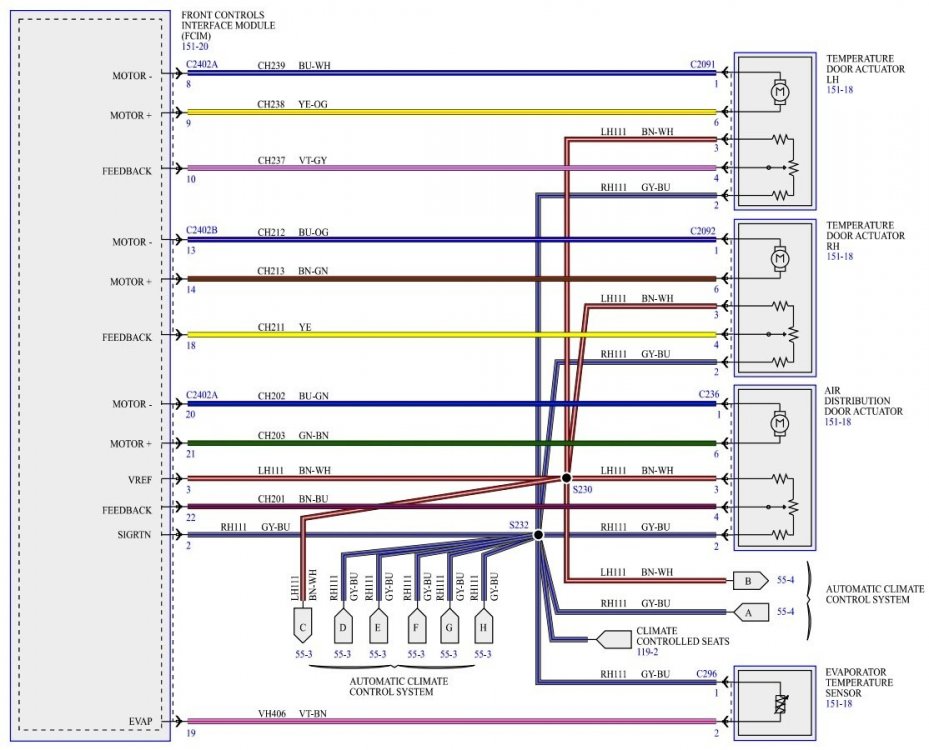
-ComponentLocation-2015EdgeWorkshopManual.thumb.jpg.ba46e6eb51b6145a71566f1c2cbf60a4.jpg)
toAirFlowDoorActuatorsWiringDiagram.thumb.jpg.0f96a061008a8eb2f45d5095e185220f.jpg)

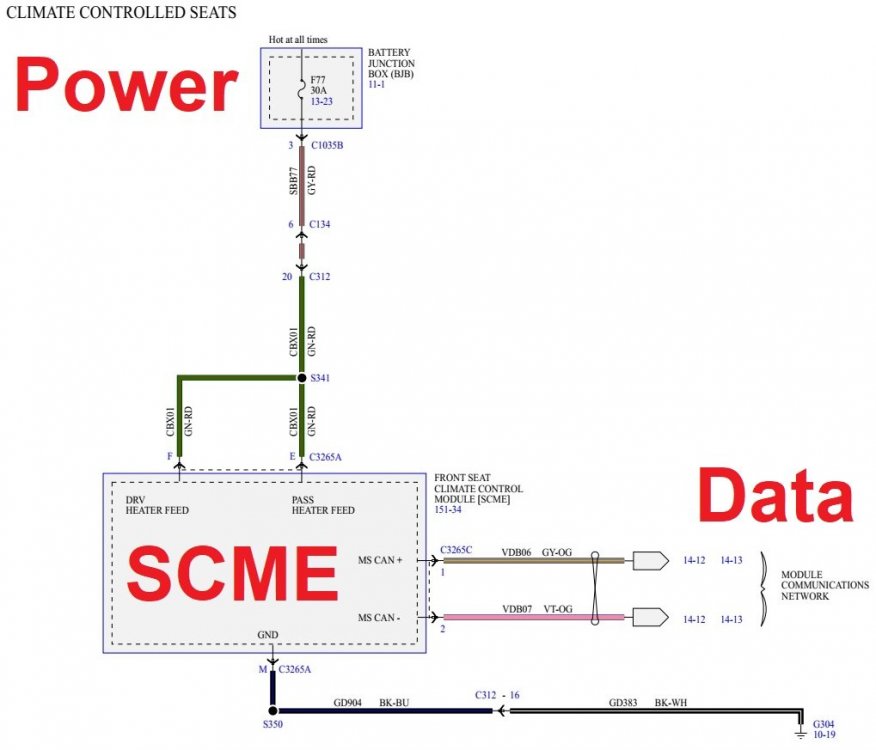

Illustration-BeneathDriverSeat.thumb.jpg.69c0e5e3a9ad74b35dd35bb50791bdac.jpg)
-BeneathPassengerSeat.thumb.jpg.3f4597e10356c5fc64990c6501b8e0ca.jpg)

